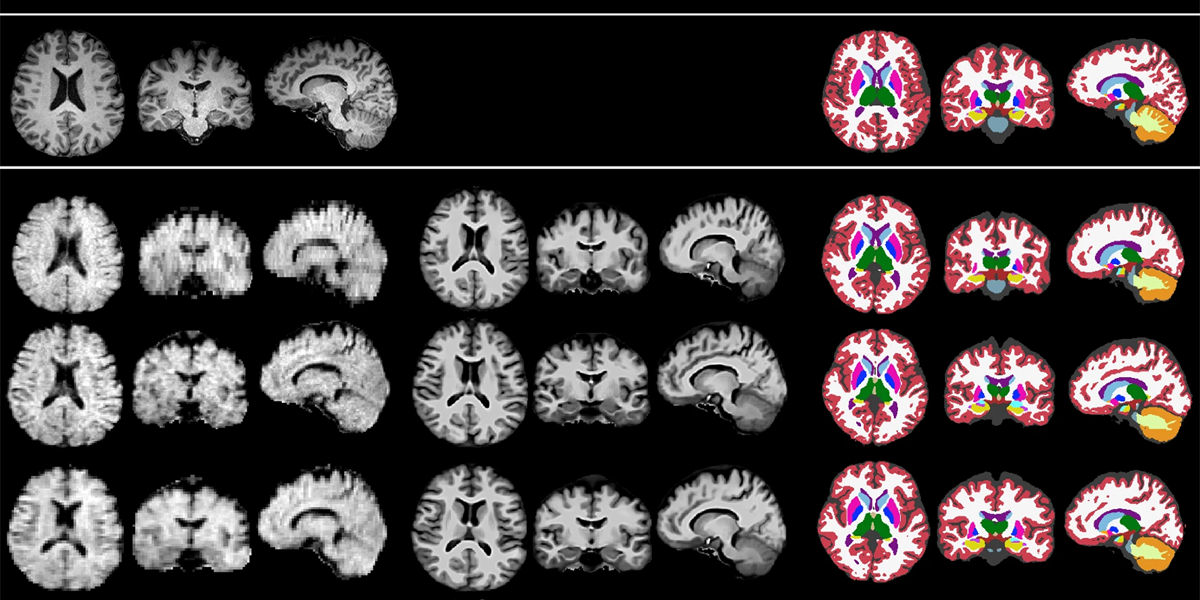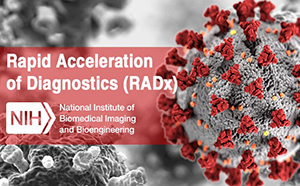Of all the instruments of modern medicine, magnetic resonance imaging or magnetic resonance imaging is one of the most powerful. But in many regions, the expense, space, and experience required to use it make this tool out of reach. A new study suggests that, with increased performance thanks to artificial intelligence (AI), existing low-cost, portable MRI technology could make high-quality brain imaging available to more patients.
“The idea is to bring the scanner closer to the patient. It could be applied very broadly, in the ICU or in communities. The potential applications are very broad,” said corresponding author W. Taylor Kimberly, M.D., Ph.D., a critical care neurologist at Massachusetts General Hospital and associate professor of neurology at Harvard Medical School.
The new system uses artificial intelligence techniques to improve the quality and then automatically analyze images taken with low-field MRI devices that, being smaller, sacrifice image quality compared to conventional MRI machines. In a recent clinical study, researchers from Massachusetts General Hospital, Harvard Medical School, and Yale School of Medicine used their automated approach to detect Alzheimer’s disease markers in humans and found that their technique performed at the same level as higher-powered MRI. Their results, published in Nature Communicationspoint to the new method as a potential means of providing broad access to high-quality brain images.
“Researchers have dreamed of reducing MRI without reducing its usefulness, but it is technologically difficult. By truly boosting its analytical capabilities with AI, this team has brought that dream of affordable imaging much closer to reality,” said Guoying Liu, Ph.D., director of the Division of Applied Science and Technology at the National Institute of Biomedical Imaging and Bioengineering (NIBIB).
Early diagnosis and monitoring of dementia are essential, and with the recent emergence of early interventions for the condition, it may only become more important. To obtain information about dementia, doctors prefer to use MRI when they can, but because it is often not practical, patients often not be diagnosed. For years, researchers have been investigating low-field-strength MRI devices as an alternative.
Like traditional MRI, low-field MRI works in part by exposing tissues to magnetic fields. Their magnets are simply smaller and produce fields that are tens to hundreds of times weaker than their high-field counterparts. These lightweight devices take up less space than standard machines, which often have entire rooms dedicated to them, but the tradeoff is often a sharp drop in image quality, Kimberly explained.
Not only may images be too blurry for human eyes to discern important details, but their lack of clarity could also rule out full or semi-automated image analysis. Many of these time-saving tools require images with voxels (like pixels, but in 3D) that have a maximum size of 1 millimeter.
Kimberly, along with a multidisciplinary team of doctors and biomedical engineers, set out to improve the capabilities of low-field technology. A key piece of their game plan was to improve image resolution through machine learning.
“Our brains are all unique, of course, but there are many, many common characteristics between individuals. That’s why machine learning is useful here, because an algorithm can learn those characteristics and then fill in the gaps in a lower resolution image,” Kimberly said.
An algorithm’s performance is only as good as its training allows, and in a field like brain imaging, there isn’t much room for error. To create a system that was resilient to a wide range of variability, the team trained algorithms on brain scans representing a variety of contexts.
In a previous studyThe team created an AI model that could improve low-quality scans taken with a portable, low-field MRI machine down to the crucial 1-millimeter resolution. The researchers found that the high-resolution images generated matched well with actual high-resolution images taken from a small group of patients.
In addition to increasing the quality of images acquired using low-field MRI, the researchers also developed fully automated programs to identify different brain regions and then calculate the volume of the parts of interest. In the new work, the authors increased the difficulty by implementing low-field MRI scans and their machine learning tools on a larger number of people, including many patients with Alzheimer’s disease or mild cognitive impairment (MCI).
In particular, they used their automated approach to calculate the size of the hippocampus and lateral ventricle, regions of the brain that are often altered in Alzheimer’s disease. They also used the system to identify and measure lesions in the brain, called white matter hyperintensities, also linked to Alzheimer’s. Monitoring changes in these regions is useful both in diagnosing and monitoring the progression of degenerative conditions.
Across experiments with nearly 100 subjects, the results from their AI-enhanced low-field MRI system were on par with measurements taken with conventional high-field machines. The authors showed that both methods could distinguish the brains of subjects with Alzheimer’s disease or mild cognitive impairment from those who were healthy with a similar level of accuracy.
“Time and time again, in every context in which we have used these algorithms, they have proven to be very robust,” Kimberly said.
The researchers believe that with further refinement, the method could give many more patients the opportunity to assess their brain health using high-quality brain imaging, a resource that may become more critical in the future.
This study was supported in part by grants from NIBIB (R01EB031114), the National Institute of Mental Health (RF1MH123195 and UM1MH130981), and the National Institute on Aging (R01AG07098 and RF1AG080371).
The study’s author, Matthew S. Rosen, Ph.D., is a shareholder in Hyperfine, Inc., which produced the low-field MRI scanners used in this study.
About the graphic: The image, which originally appeared on Nature Communicationsis available under the Creative commons licensed and has been adapted for the NIBIB website.
Study reference: Annabel J. Sorby-Adams et al. Portable low-field magnetic resonance imaging for the evaluation of Alzheimer’s disease. Nature Communications (2024). https://doi.org/10.1038/s41467-024-54972-x



